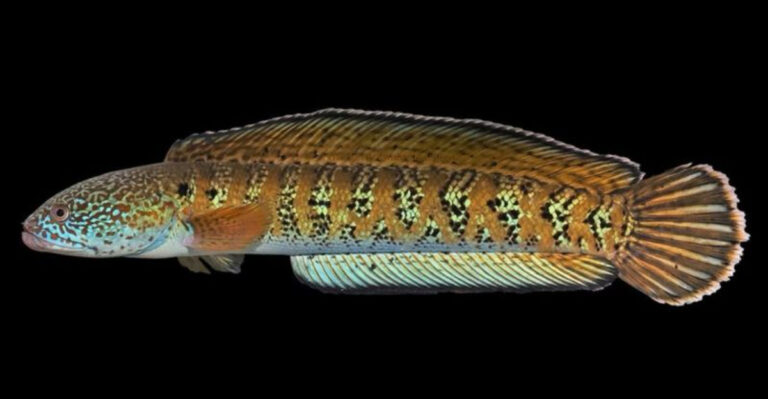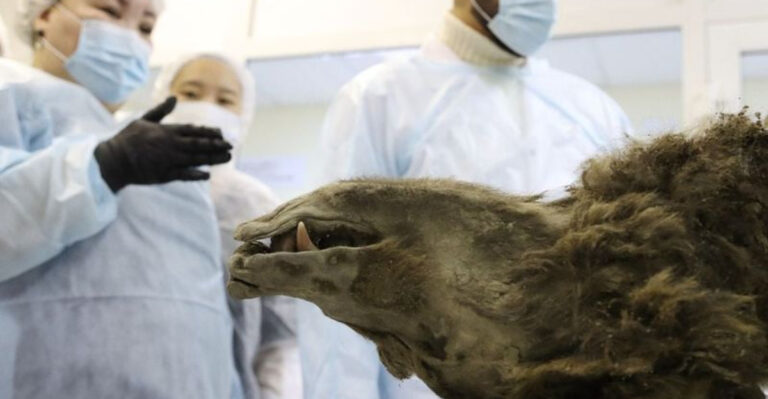24 Ways Insects Benefit Humans
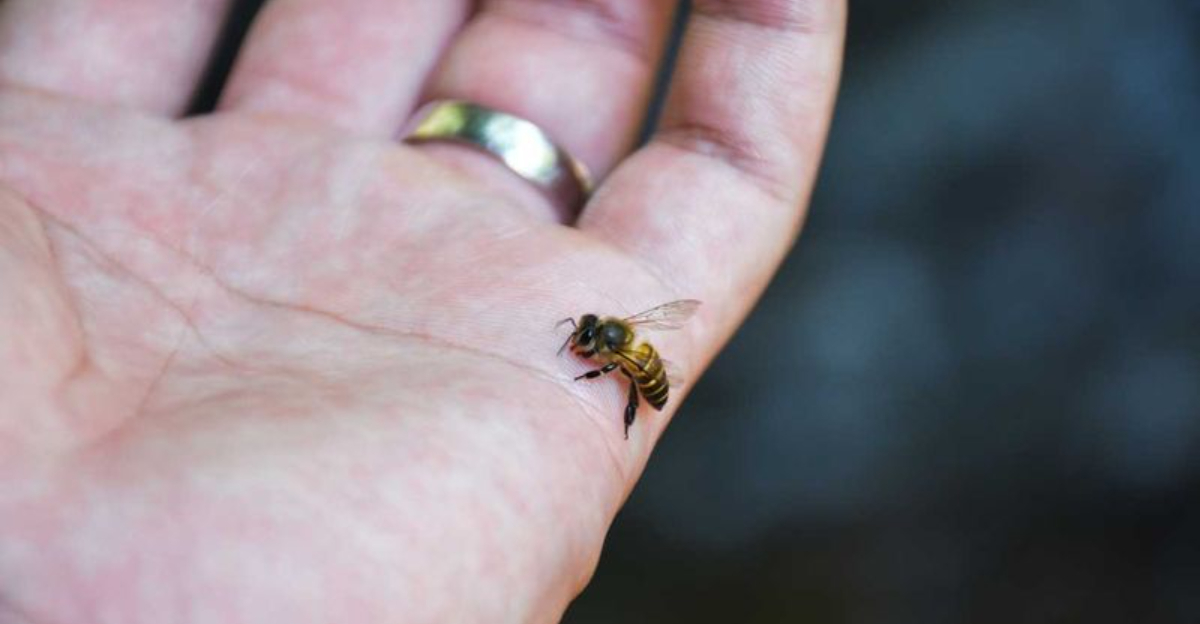
Insects, often misunderstood and overlooked, play crucial roles in our ecosystem and daily lives. Their contributions range from pollination to pest control, and much more.
Let’s explore 24 amazing ways these tiny creatures benefit humans.
1. Pollination By Bees
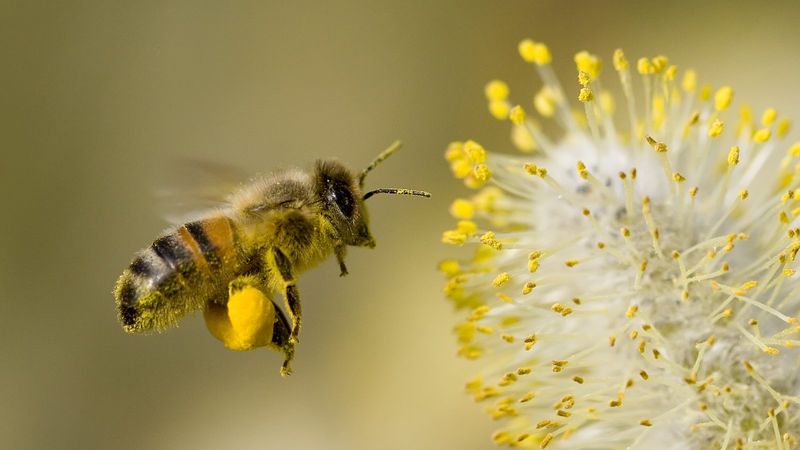
Bees are nature’s busy pollinators, buzzing from flower to flower. They help in fertilizing plants, which leads to the production of fruits, seeds, and nuts. Without bees, many plants wouldn’t be able to reproduce effectively, which would impact our food supply significantly. In gardens and farms around the world, bees ensure that plants are fruitful, aiding in our agricultural production.
Beyond the garden, bees contribute to the diversity of our diets. They play a crucial role in the growth of crops like almonds, apples, and blueberries. Each time a bee visits a flower, it transfers pollen, which is vital for plant reproduction.
Moreover, bees also impact our economy positively. Many industries, including agriculture and food production, rely on their pollination services. So next time you see a bee, remember its vital role in keeping our food supplies thriving.
2. Silk Production By Silkworms
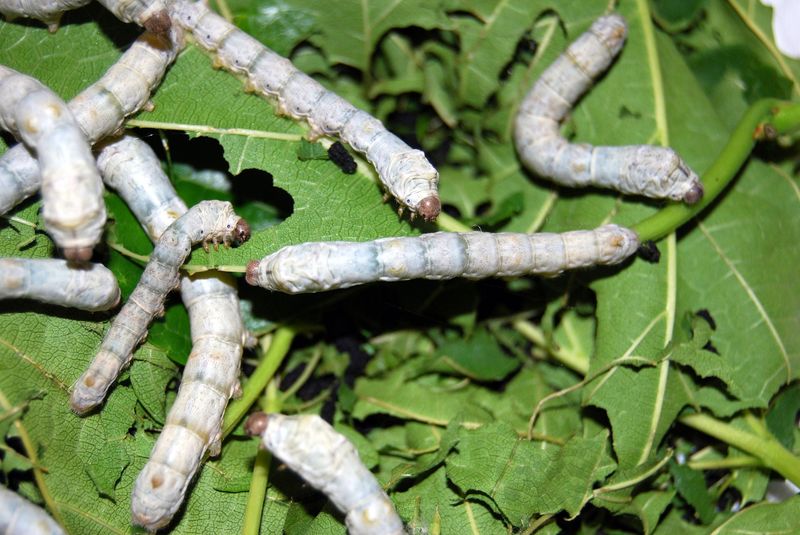
Silkworms are unique insects known for producing silk threads. This silk is spun into luxurious fabrics that are sought after worldwide. The process begins when silkworms secrete fibroin, a protein that forms silk threads. These threads are later harvested and woven into fabric.
Silk has been cherished for centuries due to its softness, luster, and strength. It’s used in making clothing, accessories, and even luxury bedding. The silk industry also provides jobs for many, especially in regions where traditional silk farming is practiced.
In addition to fashion, silk is used in various medical applications. Its biocompatibility makes it suitable for surgical sutures and has potential in tissue engineering. Silkworms, though small, have a big impact on both the economy and medical innovations, showing just how valuable these insects are to humans.
3. Pest Control By Ladybugs
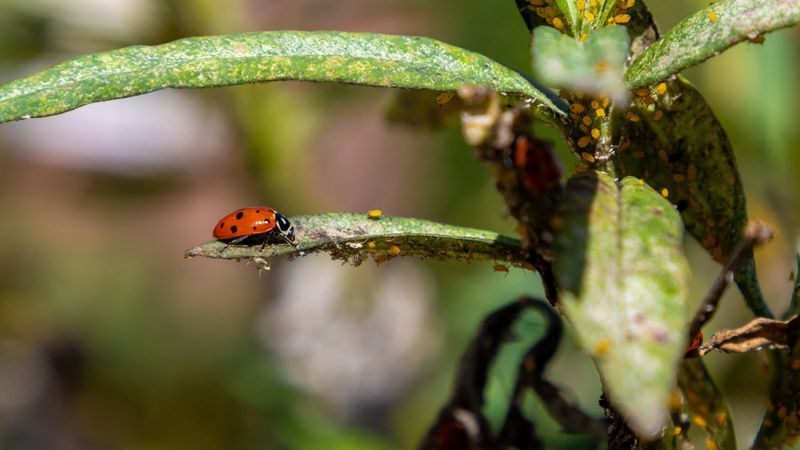
Ladybugs, with their charming polka dots, are natural pest controllers. They feast on aphids, mites, and other plant-damaging pests, making them gardeners’ best friends. These insects help maintain the health of plants without the need for chemical pesticides.
By controlling pest populations, ladybugs support organic farming and gardening practices. This can lead to healthier plants and produce, which benefits both farmers and consumers. Ladybugs are vital for maintaining ecological balance.
Encouraging ladybug populations in your garden can be as simple as planting flowers they love, like marigolds and dandelions. They help reduce the need for harmful chemicals, promoting a more sustainable way of gardening. These small but mighty insects play a crucial role in keeping our gardens and crops flourishing naturally.
4. Decomposition By Beetles
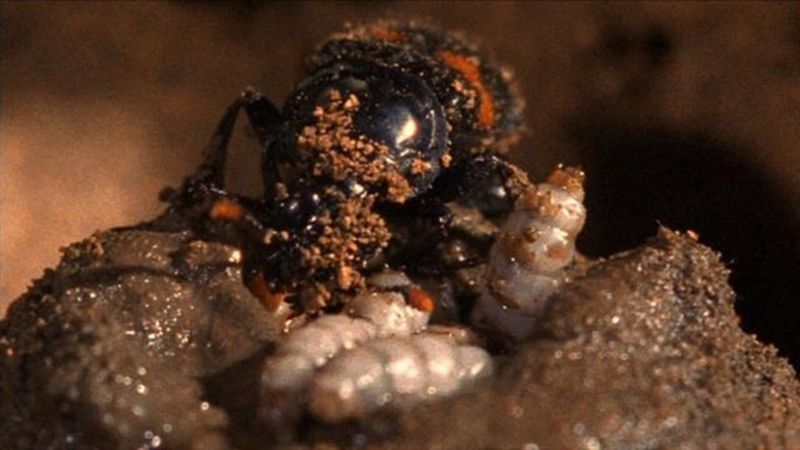
Beetles are nature’s recyclers, breaking down dead plants and animals. This process enriches the soil, making nutrients available for new plant growth. It’s an essential part of maintaining healthy ecosystems. Without beetles, dead organic matter would accumulate, disrupting the balance of nature.
These insects are involved in the decomposition process, helping to recycle nutrients back into the soil. This supports plant growth and soil fertility, which are crucial for agriculture. By breaking down dead material, beetles ensure that nutrients are continuously cycled through ecosystems.
For gardeners and farmers, beetles play an indispensable role in maintaining soil health. Encouraging these insects in your garden can enhance soil productivity naturally. Their role in decomposition highlights the importance of insects in sustaining the earth’s delicate ecological balance.
5. Honey Production By Bees
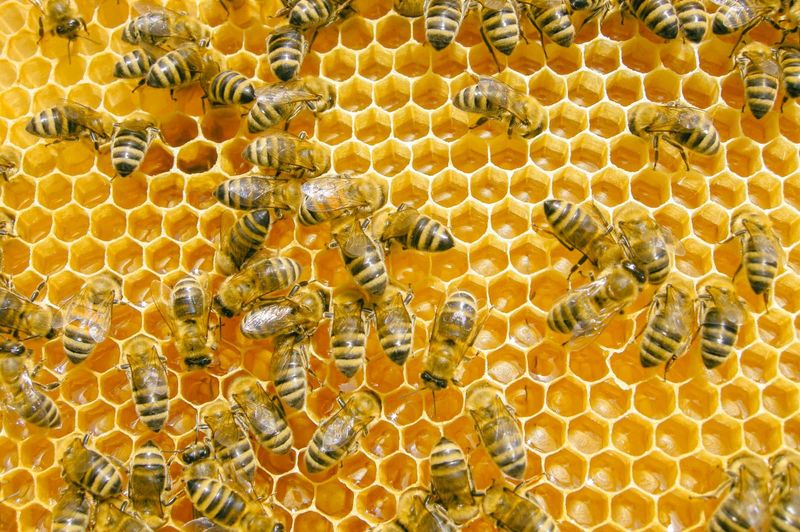
Bees are famous for producing honey, a natural sweetener enjoyed by many. Honey is not only delicious but also packed with health benefits. It has antibacterial properties and is often used as a natural remedy for coughs and sore throats.
The process of honey production begins with bees collecting nectar from flowers. They then return to their hives, where the nectar is transformed into honey. Beekeepers harvest this honey, which is then processed and distributed.
From a commercial perspective, honey contributes to the economy by supporting beekeeping industries. Beekeepers worldwide rely on honey production for their livelihoods. Besides its economic value, honey’s health benefits make it a favored choice for natural wellness remedies. Thus, bees play a significant role not only in pollination but also in providing us with this golden delight.
6. Dye Production By Cochineal Insects
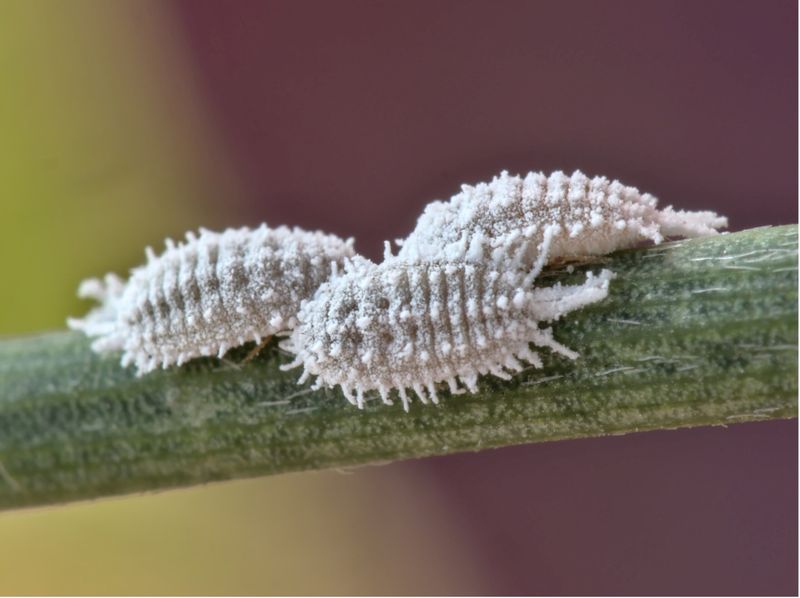
Cochineal insects might not be well-known, but they produce a vibrant red dye. This dye is extracted from the insects and used in various products, including cosmetics, food coloring, and textiles. The color, known as carmine, is sought after for its natural origin.
The use of cochineal dye dates back to ancient civilizations, who valued its bright hue. Today, it is still prized for its intensity and stability compared to synthetic dyes. The dye is also considered safer for consumption and use on skin.
In regions where cochineal insects are harvested, they provide economic opportunities. The production process involves careful cultivation and harvesting, supporting local economies. From traditional textiles to modern cosmetics, cochineal dye connects past and present, all thanks to these tiny insects. Their role in dye production showcases an unusual but significant way insects benefit humanity.
7. Soil Aeration By Earthworms
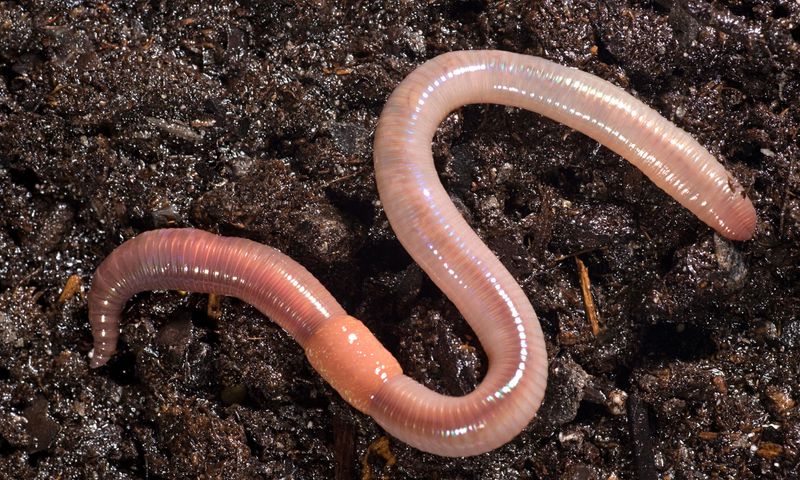
Earthworms, often mistaken for insects, play a crucial role in aerating the soil. As they move through the earth, they create channels that allow air and water to penetrate the soil, improving its structure. This process is vital for healthy plant growth and enhances soil fertility.
By digesting organic matter, earthworms also enrich the soil with nutrients. Their waste, known as castings, is highly beneficial for plants. This natural process helps maintain a balanced ecosystem and supports sustainable agriculture.
For gardeners, encouraging earthworm activity can lead to healthier plants and more productive gardens. Simple actions like adding organic matter can attract earthworms. Though not insects, their contribution to soil health is invaluable, making them unsung heroes in gardening and farming. Earthworms demonstrate how even the smallest creatures can have a big impact on the environment.
8. Seed Dispersal By Ants
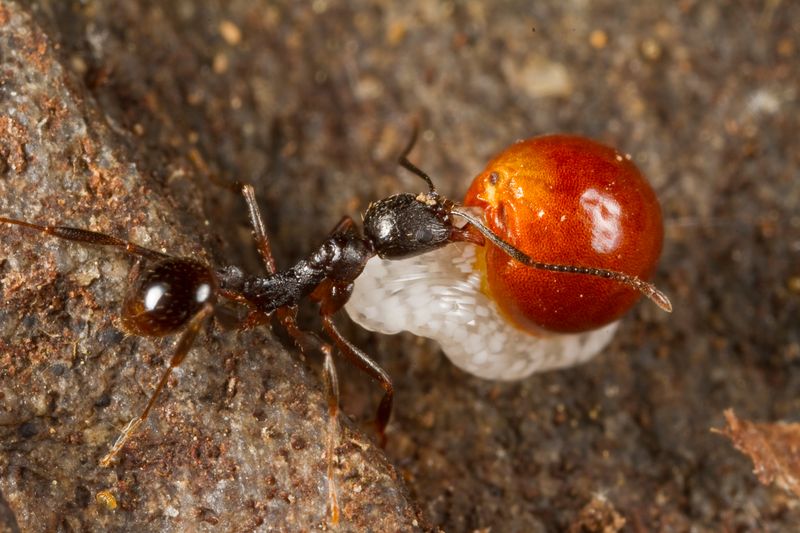
Ants are industrious workers, known for their role in seed dispersal. As they forage, they collect and transport seeds, often burying them underground. This behavior aids in the spread and growth of plants, contributing to biodiversity.
Seed dispersal by ants is particularly beneficial for plants that rely on this method for reproduction. By moving seeds away from the parent plant, ants help reduce competition and increase the chances of successful germination. This process supports diverse plant communities.
In addition to aiding plant reproduction, ants improve soil structure by aerating the soil during their activities. For ecosystems, this means better soil health and plant growth. Ants illustrate how their diligent efforts help sustain the balance of nature, making them essential players in our environment.
9. Bioluminescence By Fireflies
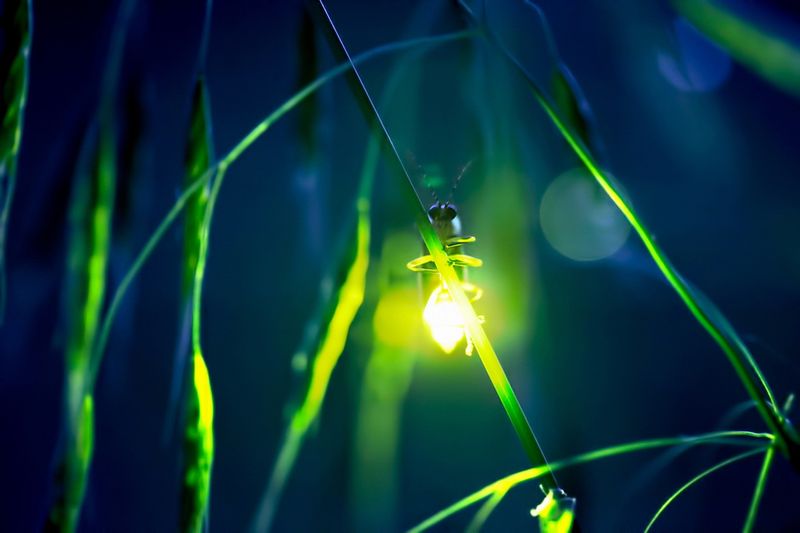
Fireflies are famous for their enchanting glow, which is a result of bioluminescence. This natural light is used by fireflies to communicate and attract mates. The soft, blinking glow adds a touch of magic to summer evenings and is a wonder of nature.
Bioluminescence is not just beautiful; it has practical applications too. Scientists study fireflies to understand how bioluminescence works, which can lead to innovations in medical imaging and biotechnology. This research has the potential to improve diagnostic techniques.
Beyond science, fireflies are cherished for their role in cultural traditions and storytelling. They inspire wonder and curiosity in both children and adults. Fireflies remind us of the beauty and mystery of the natural world, showcasing how insects can captivate and contribute to human knowledge and joy.
10. Pollination By Butterflies
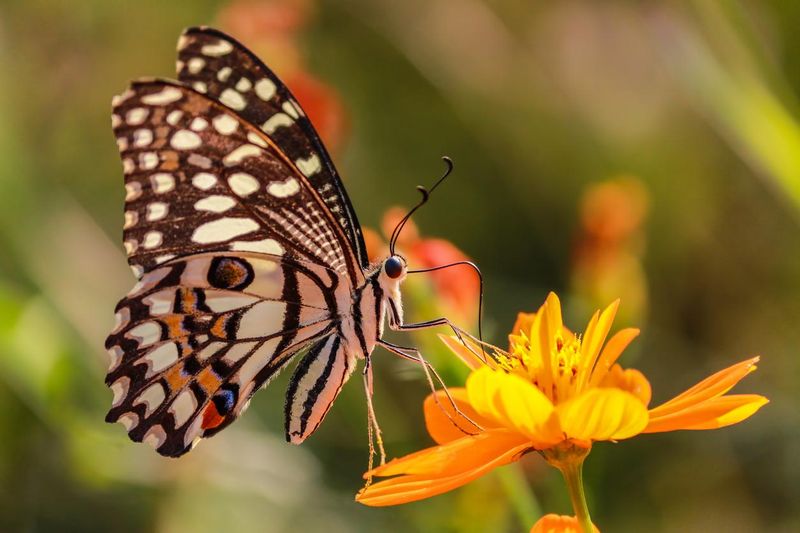
Butterflies, with their delicate wings and graceful flight, are important pollinators. Like bees, they transfer pollen from one flower to another, aiding in plant reproduction. Their preference for specific flowers can also help in the conservation of rare plant species.
The presence of butterflies in gardens and wild areas is an indicator of a healthy ecosystem. They contribute to the biodiversity of plants, which supports a wide range of other wildlife. By pollinating plants, butterflies help maintain the balance of nature.
Encouraging butterflies in your garden can be as simple as planting nectar-rich flowers. Their beauty and ecological role make them both gardeners’ delights and environmental allies. Butterflies demonstrate how insects contribute to the vibrant tapestry of life on Earth. They remind us of the interconnectedness of nature and the importance of protecting our pollinators.
11. Healing Venom Of Wasps
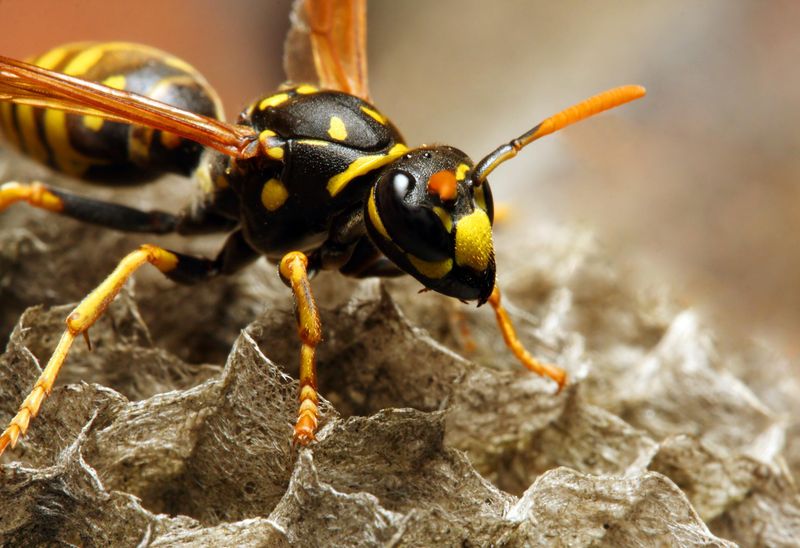
Wasps, often seen as pests, possess venom with potential medicinal properties. Research has shown that their venom contains compounds that can kill cancer cells and bacteria, opening the door to new treatments. This discovery highlights the untapped potential of wasps in medicine.
The study of wasp venom is still in its early stages, but it holds promise for developing new antibiotics and cancer therapies. By understanding how wasp venom works, scientists hope to create novel treatments that can combat resistant bacteria and cancer.
Beyond their sting, wasps play a role in controlling pest populations and pollinating plants. Their medicinal potential adds another layer to their importance. Wasps challenge us to reconsider the value of creatures we may fear, reminding us that even the most unexpected insects can hold the key to significant scientific advancements.
12. Pollination By Moths
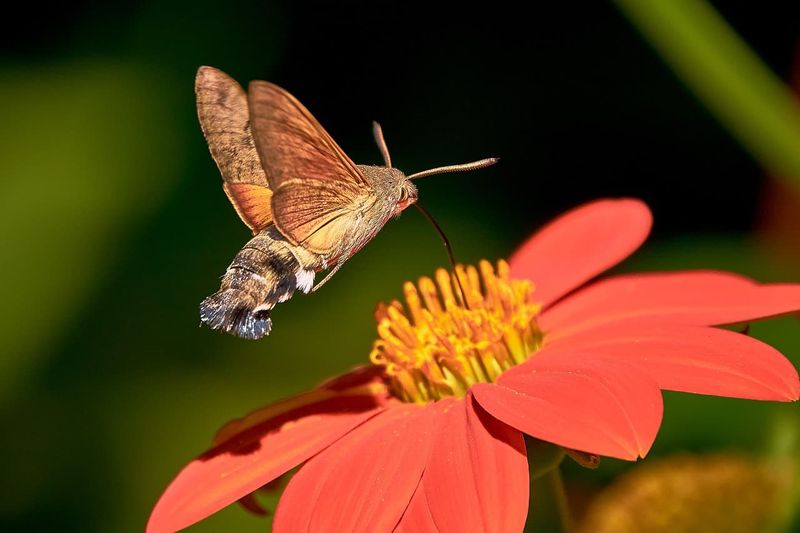
Moths, often overlooked, are vital nighttime pollinators. While butterflies work by day, moths take the night shift, visiting flowers that bloom after dark. This nocturnal pollination supports many plant species and ensures continuous plant reproduction.
Moth-pollinated plants often have strong scents and pale colors to attract these night-flying insects. By transferring pollen, moths help maintain plant diversity and ecosystem health. Their role as pollinators is crucial for the survival of certain plants.
Encouraging moths in gardens can be achieved by planting night-blooming flowers. These insects highlight the importance of protecting all pollinators, not just the well-known ones. Moths show us that every creature has a role in the web of life, contributing to the richness of our natural world even under the cover of darkness.
13. Antibiotic Properties Of Maggots
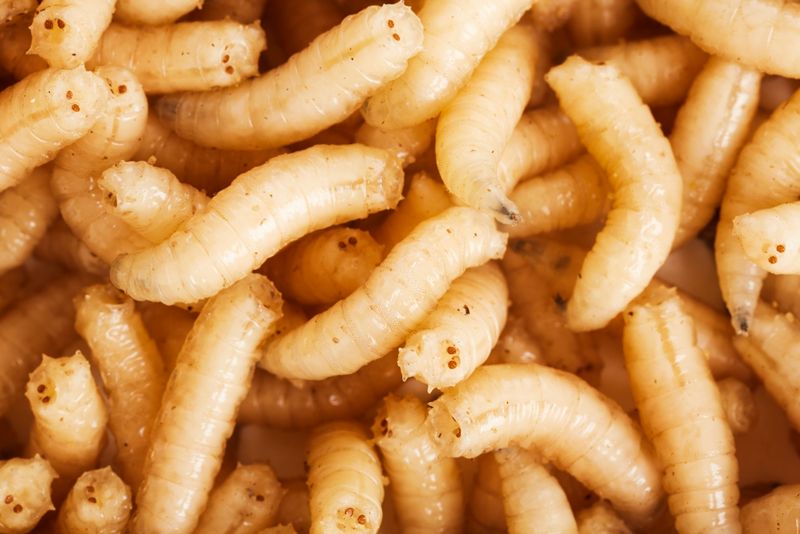
Maggots, specifically those of certain fly species, are used in medical treatments for their antibiotic properties. When applied to wounds, they help clean away dead tissue and promote healing, a process known as maggot therapy. This method has been used for centuries and is gaining renewed interest.
Maggot therapy is effective in treating chronic wounds and ulcers. The enzymes produced by maggots break down dead tissue while sparing healthy tissue, encouraging faster recovery. This natural method can be particularly beneficial for patients with difficult-to-heal wounds.
Beyond their medical applications, maggots play a role in decomposition, recycling nutrients back into ecosystems. Their unique abilities demonstrate how even the least appealing insects can offer valuable contributions to human health and environmental processes. Maggots remind us of the surprising ways insects can benefit humanity, both in medical science and nature.
14. Waste Decomposition By Flies
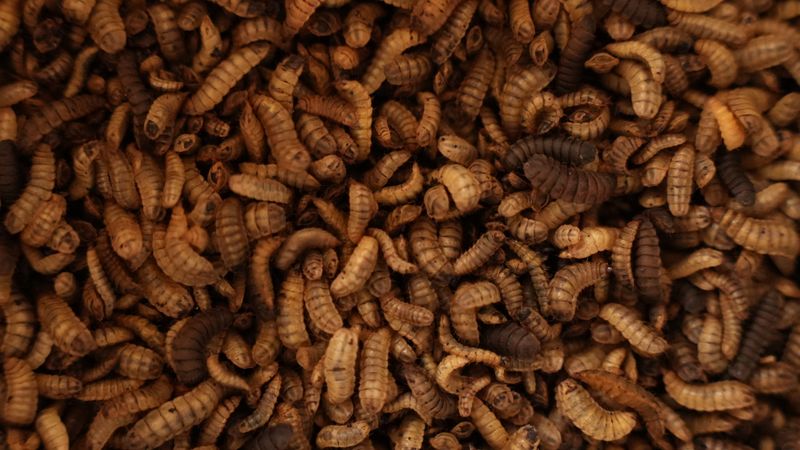
Flies, often seen as nuisances, play a critical role in waste decomposition. They break down decaying matter, transforming it into nutrients that enrich the soil. This process supports plant growth and maintains ecological balance.
In compost systems, flies help accelerate the breakdown of organic material. Their activity increases the efficiency of composting, providing rich fertilizer for gardens and farms. This natural recycling process reduces waste and promotes sustainability.
Beyond composting, flies contribute to the food chain by serving as prey for other animals. Their role in decomposition and as a food source underscores their importance in ecosystems. Flies, though sometimes bothersome, offer essential services that support both nature and human activities. They highlight the interconnectedness of life and the vital functions of insects in maintaining a healthy environment.
15. Chitin Production By Insects
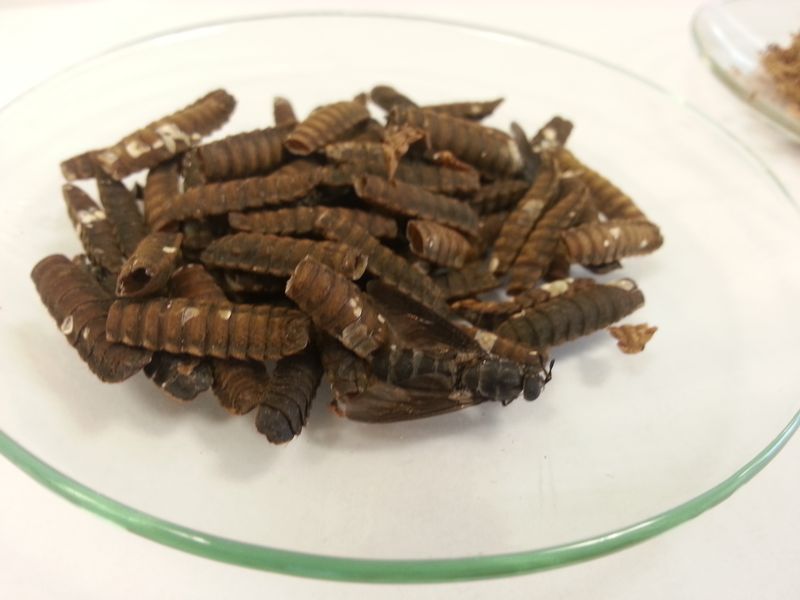
Chitin, a natural polymer found in insects’ exoskeletons, has various industrial and medical applications. It’s used to make biodegradable plastics, wound dressings, and even as a dietary supplement. The versatility of chitin demonstrates its potential to benefit multiple industries.
The extraction of chitin from insects is a sustainable process. It offers an eco-friendly alternative to synthetic materials, reducing environmental impact. Chitin’s properties, such as strength and biodegradability, make it suitable for innovative products.
In medicine, chitin and its derivative chitosan are used for their healing and antibacterial properties. They promote wound healing and can be used in drug delivery systems. The study and use of chitin exemplify how insects contribute to advancements in technology and medicine, turning what might seem like a simple material into a valuable resource for human benefit.
16. Pollination By Hoverflies
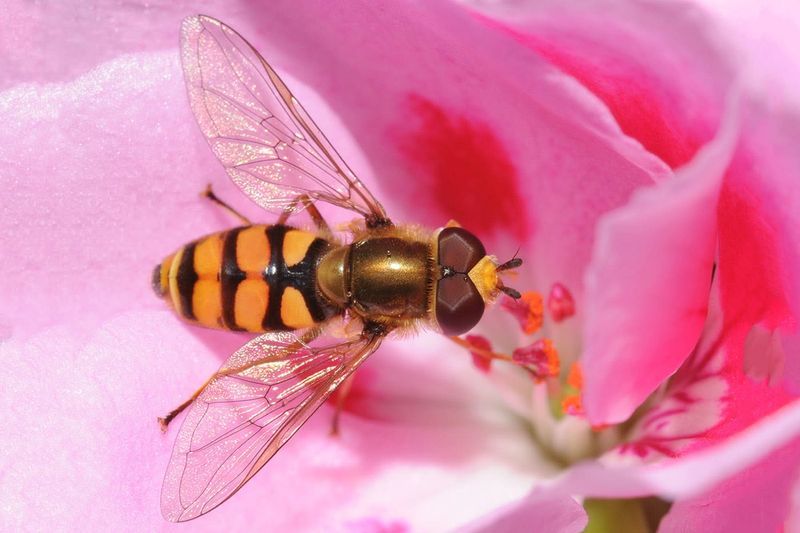
Hoverflies, with their striking resemblance to bees, are important pollinators. They visit a variety of flowers, transferring pollen as they feed on nectar. This activity supports plant reproduction and biodiversity. Hoverflies are especially valuable in gardens and wild areas.
Unlike bees, hoverflies cannot sting, making them safe and beneficial visitors to gardens. They help increase the yield of crops like fruits and vegetables, contributing to food production. By encouraging hoverflies, gardeners can enjoy a natural boost in pollination.
These insects also play a role in controlling aphid populations, as their larvae feed on these pests. Hoverflies demonstrate the dual benefits of pollination and pest control, showcasing how insects can support both plant health and ecological balance. Their presence highlights the intricate connections between insects and the environment, emphasizing the importance of fostering diverse insect populations.
17. Forensic Uses Of Blowflies
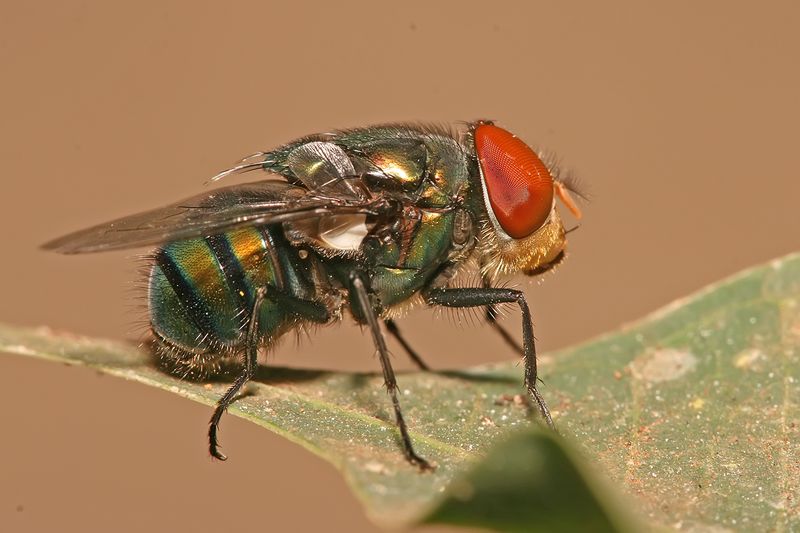
Blowflies are well-known in forensic science for their role in crime scene investigations. Their life cycle helps determine the time of death in forensic cases, providing valuable evidence. By studying the stages of blowfly development, forensic experts can estimate how long a body has been decomposing.
This method of using blowflies is an established practice in forensic entomology. It aids in solving criminal cases by providing timelines that are crucial for investigations. The presence and development stage of blowflies offer insights into the circumstances surrounding a death.
Beyond forensics, blowflies contribute to decomposition, recycling nutrients back into the ecosystem. Their role in both forensic science and nature underscores their importance. Blowflies highlight how insects, often perceived as mere pests, have significant applications in science and justice, transforming our understanding of their potential contributions.
18. Insect-Inspired Robotics
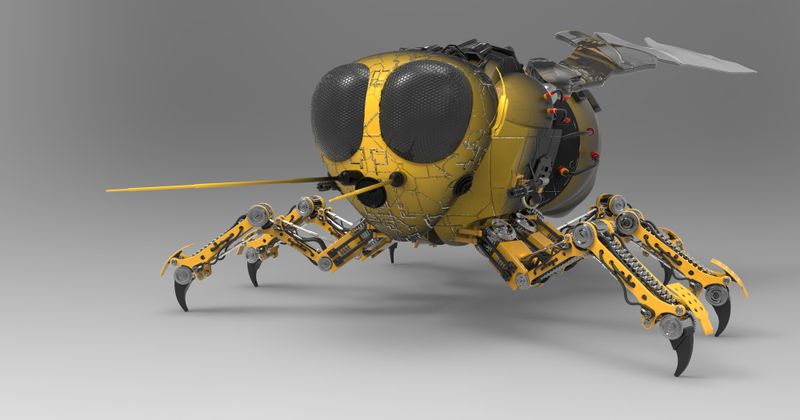
Insects have inspired the design and development of innovative robotics. Their efficient movement and adaptability are mimicked in robots used for exploration, search and rescue, and beyond. These insect-inspired robots can navigate challenging environments, showcasing the potential of biomimicry.
The study of insect anatomy and behavior has led to advancements in robotics. Engineers use these insights to create machines that can climb, crawl, and fly in ways traditional robots cannot. This technology has applications in disaster response, environmental monitoring, and more.
Insect-inspired robotics demonstrates the power of observing and learning from nature. By understanding how insects move and interact with their environment, scientists and engineers develop solutions that benefit society. This field highlights the unexpected ways insects contribute to technological innovation, showing how nature can inspire and drive human progress.
19. Biomonitoring With Stoneflies
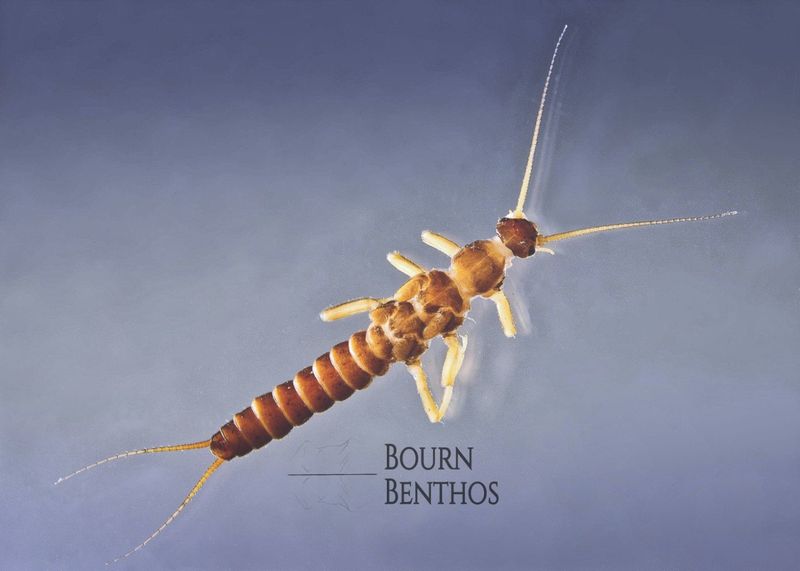
Stoneflies serve as indicators of water quality in biomonitoring efforts. Their presence in streams and rivers signifies clean, oxygen-rich water. Scientists monitor stonefly populations to assess the health of aquatic ecosystems and identify pollution levels.
Due to their sensitivity to pollution, stoneflies are valuable in environmental assessments. Changes in their populations can indicate shifts in water quality, prompting further investigation. This makes them essential tools in conservation and environmental protection efforts.
Beyond their ecological role, stoneflies contribute to the food web by serving as prey for fish and other aquatic animals. Their use in biomonitoring underscores the importance of insects in maintaining ecological balance and safeguarding natural resources. Stoneflies exemplify how insects play critical roles in environmental science, helping protect and preserve our planet’s precious waterways.
20. Insect-Based Food Innovations
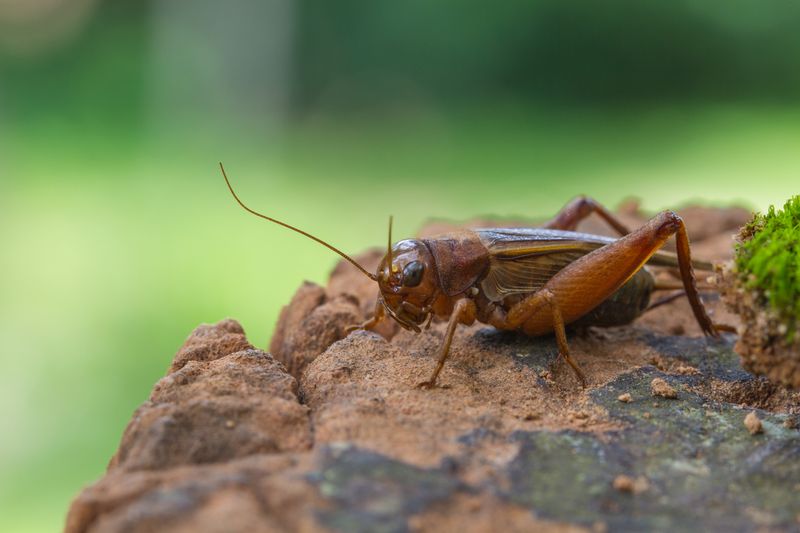
Insects are emerging as a sustainable food source, offering high protein and low environmental impact. Products like cricket flour and mealworm snacks are gaining popularity as innovative alternatives to traditional meat. These insect-based foods are nutritious and environmentally friendly.
The production of insect-based foods requires less land, water, and feed compared to livestock. This sustainable approach helps reduce the carbon footprint and supports global food security. As the world seeks to meet growing food demands, insects offer a viable solution.
Beyond sustainability, insect-based foods are versatile and can be incorporated into various cuisines. Chefs and food innovators explore new ways to use insects, creating delicious and nutritious dishes. This culinary trend highlights the potential of insects to transform diets and promote eco-friendly eating habits, paving the way for a more sustainable future.
21. Entomophagy In Cultural Traditions
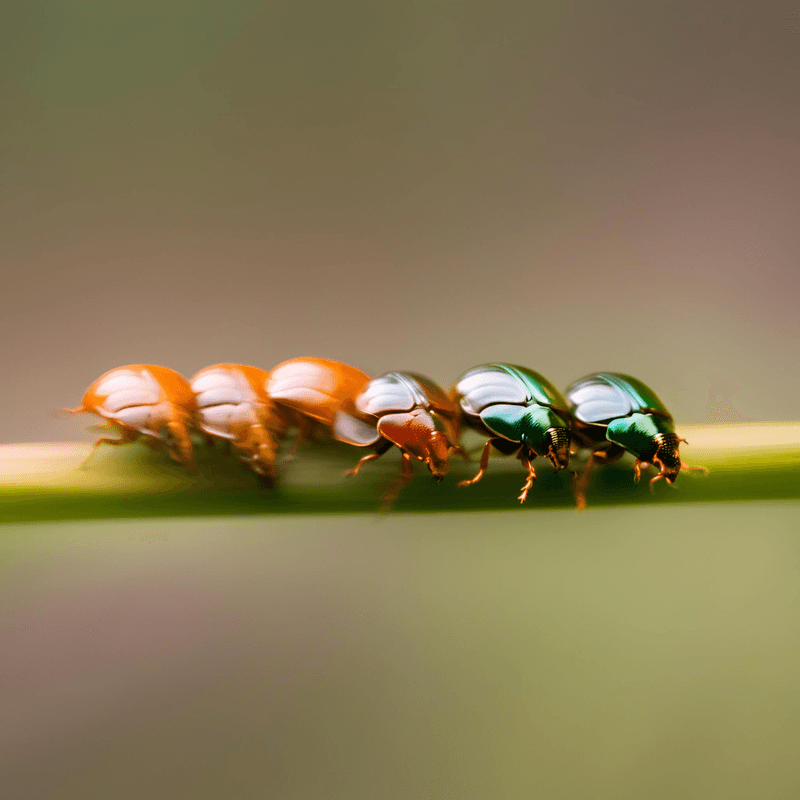
Entomophagy, the practice of eating insects, is a tradition in many cultures worldwide. In regions like Africa, Asia, and Latin America, insects are part of the daily diet, offering nutrition and culinary diversity. This practice showcases the cultural significance and benefits of insects as food.
Insects are rich in protein, vitamins, and minerals, making them a nutritious food choice. They also have a lower environmental impact compared to traditional livestock, promoting sustainability. As global populations grow, entomophagy offers a way to meet food demands while respecting cultural traditions.
The acceptance of insect-based foods is growing in Western countries, where they are seen as sustainable alternatives. This shift in perspective highlights the potential of insects to contribute to global food security. Entomophagy celebrates the culinary and cultural heritage of various societies, demonstrating the diverse ways humans connect with insects for nourishment.
22. Medicinal Uses Of Bee Venom
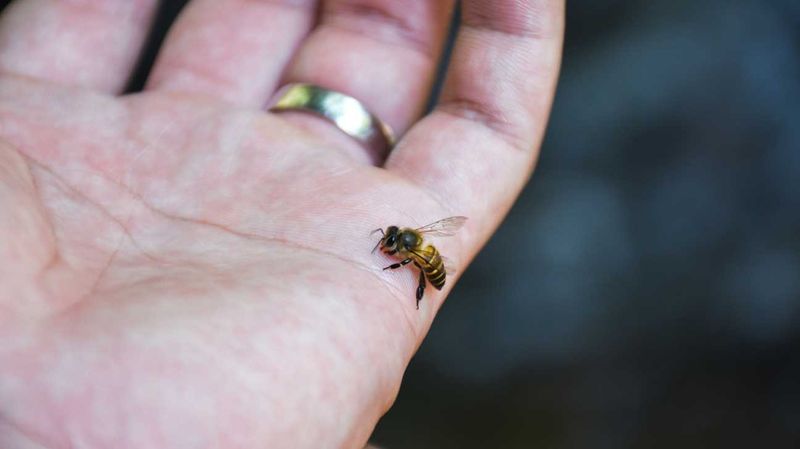
Bee venom, a natural substance with medicinal properties, is used in various treatments. Known as apitherapy, it offers relief for conditions like arthritis and multiple sclerosis. The anti-inflammatory effects of bee venom make it valuable in natural medicine.
In apitherapy, bee venom is applied through direct stings or injections. This treatment can reduce pain and inflammation, improving quality of life for patients. The therapeutic potential of bee venom is an exciting area of research, exploring new medical applications.
Beyond its medicinal uses, bee venom is integral to bees’ defense and survival. This dual role demonstrates the complexity and significance of bees in both nature and medicine. Bee venom exemplifies how insects contribute to human health and well-being, offering natural remedies that complement conventional treatments.
23. Insect-Derived Pharmaceuticals

Insects are a source of innovative pharmaceuticals, providing compounds with potential therapeutic benefits. Research into insect-derived substances, like enzymes and peptides, is leading to new drug discoveries. These natural compounds offer unique properties that can be harnessed for medical use.
The exploration of insect-based pharmaceuticals includes treatments for infections, inflammation, and even cancer. Insect compounds are often more effective and less toxic than synthetic alternatives, making them attractive for drug development.
This research underscores the untapped potential of insects in medicine. By studying their biology and chemistry, scientists find new ways to address health challenges. Insect-derived pharmaceuticals highlight the importance of biodiversity in drug discovery, demonstrating how insects can inspire breakthroughs in medical science and improve human health outcomes.
24. Insect-Pollinated Crops
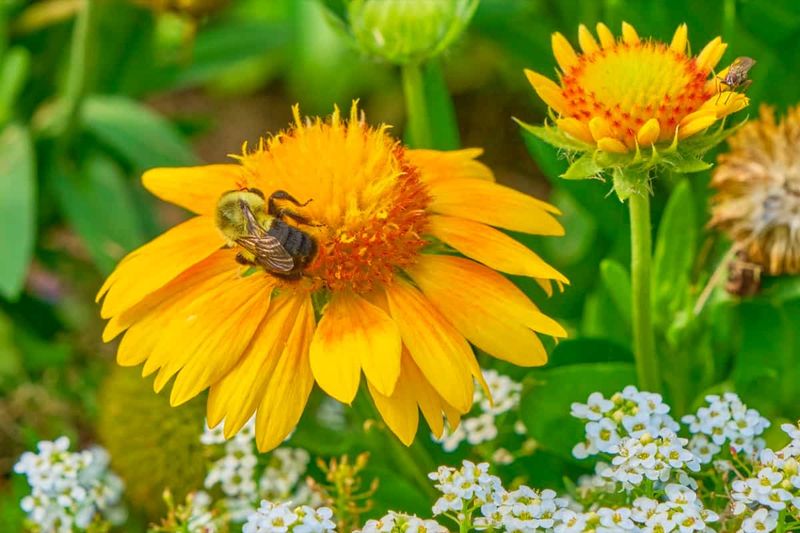
Insect-pollinated crops play a vital role in agriculture, contributing to food diversity and security. Insects like bees, butterflies, and beetles pollinate a wide range of crops, from fruits and vegetables to nuts and spices. Their work ensures the production of many foods we rely on daily.
This natural pollination process increases crop yields and quality, benefiting farmers and consumers alike. It supports food supply chains and contributes to the economy, highlighting the economic importance of pollinating insects.
Protecting insect pollinators is crucial for sustainable agriculture. By creating habitats and reducing pesticide use, we can support these essential workers. Insect-pollinated crops emphasize the interconnectedness of agriculture and ecology, showcasing the indispensable role insects play in nourishing the world and sustaining agricultural practices.


